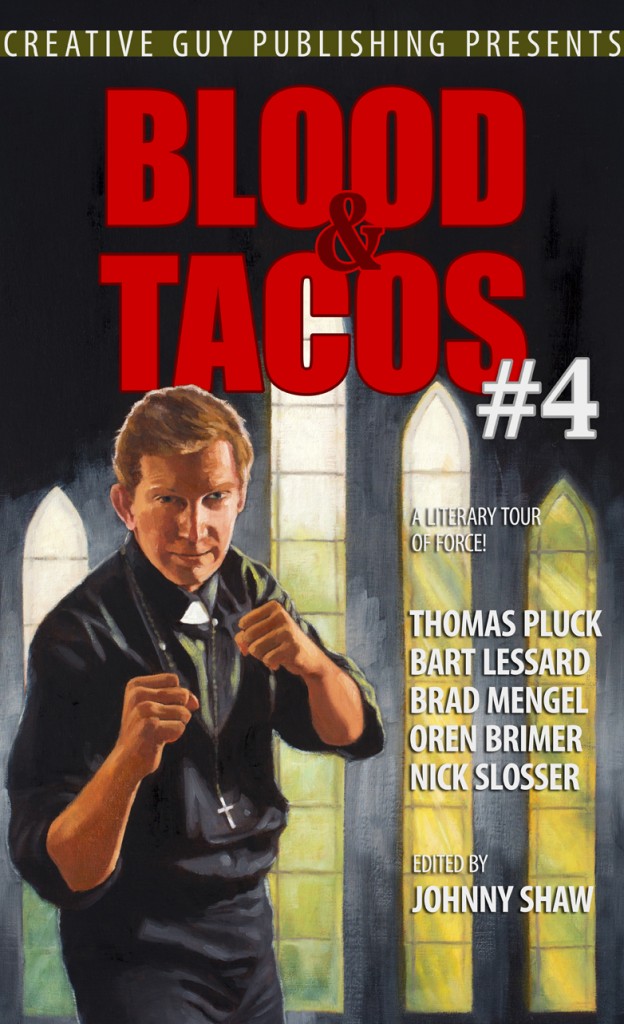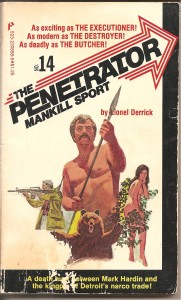Hello, friends.
Thanks so much for visiting BLOOD & TACOS.
Here’s how it all began. I wrote a story inspired by 1970s men’s action serial paperbacks titled—you guessed it—“Blood and Tacos.” I was going to write a blog about it and pass it off as a chapter of a book I found in my garage and then every once in a while “discover” new paperbacks. Not really a hoax, but an opportunity to write in a unique voice and have some fun.
But why should I have all the fun? I decided it would be even more fun to ask other writers to do the same thing. To “discover” stories of their own. Pick an era, create a person and a hero, and write a story.
The “pulp era” generally refers to the time from the 1920s to the 1940s when pulp magazines were at their height. The “pulp” paperback soon followed, taking over the tradition in the 1940s and really hitting their stride into the 1950s and 1960s.
But where did the pulps go after the 1960s. I would argue that the descendent of the pulps in the 1970s to 1990s were the men’s serial adventure paperbacks. Mack Bolan, Remo Williams, Nick Carter (but only in the era when he is known as Killmaster), etc. ushered in the revival of the “pulp hero” (It is no coincidence that pulp heroes like Doc Savage, Conan, and the Shadow all gained a resurgence in the 1970s).
These were fast & fun books, feverish first drafts full of entertainment value. But if fast & fun is the base, there is a greater goal to be achieved. What I like to call the “ridiculously awesome.”
When a book opens with the hero fighting an albino with a spear-gun (see THE HELLFIRE CONSPIRACY (Agent for COMINSEC #4) by Ralph Hayes), one’s first reaction might be, “that’s ridiculous.” But on closer examination, that reaction will turn to “that’s awesome.” Bingo! Both of you are right. Ridiculously awesome!
These books were the B-movies of literature. Written quickly, tongue-in-cheek, and with the potential to be fun as hell.
But while that explains why I enjoy reading the stories, why write new stories?
It’s the challenge. To write in a different voice. To write outside one’s comfort zone with the safety net of a pseudonym and a goofy history. To write in the voice of a fictional person from another era, writing within a hack factory (or hacktory) sounded like so much damn fun, I couldn’t resist. And I was lucky that a couple of writers agreed with me.
So many of the books from this era depict a world where either America (or ‘merica to my ‘merican friends) is on the brink of destruction, not to mention the post-apocalyptic sub-genre that runs rampant in the Reagan Era. A world view where men with mustaches bring order to chaos. And women, minorities, youth culture, foreigners, and every other “other” are treated with fear and a punch to the jaw.
Writing “Blood & Tacos” I got the opportunity to write from the point of view of Brace Godfrey in 1972. Who is Brace Godfrey? You’ll have to wait and find out.
The opportunity to write in a different voice, maybe slip in a heavy dose of satire, comment on the era in which the book is written, and blow some shit up. Now that’s what I call a good time.
BLOOD & TACOS is just starting and we’re kind of making it up as we go, but the one thing I guarantee you is that we’ll work hard to make it great. And when it’s all said and done, it will be ridiculously awesome.
Excelsior!
March, 2012


